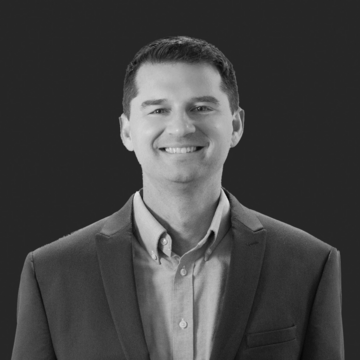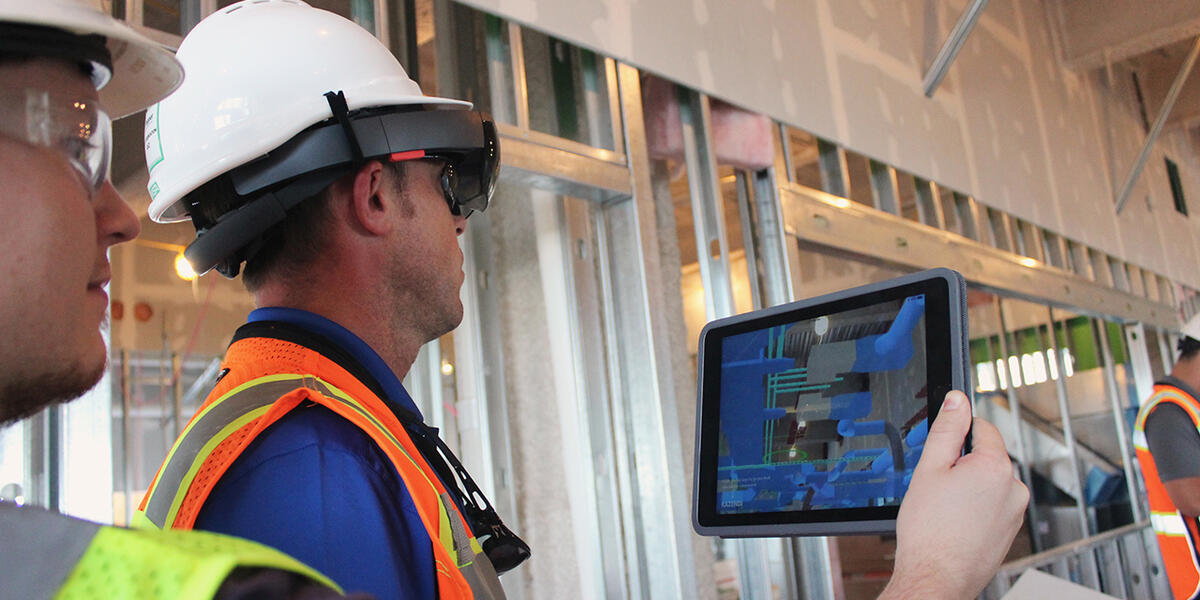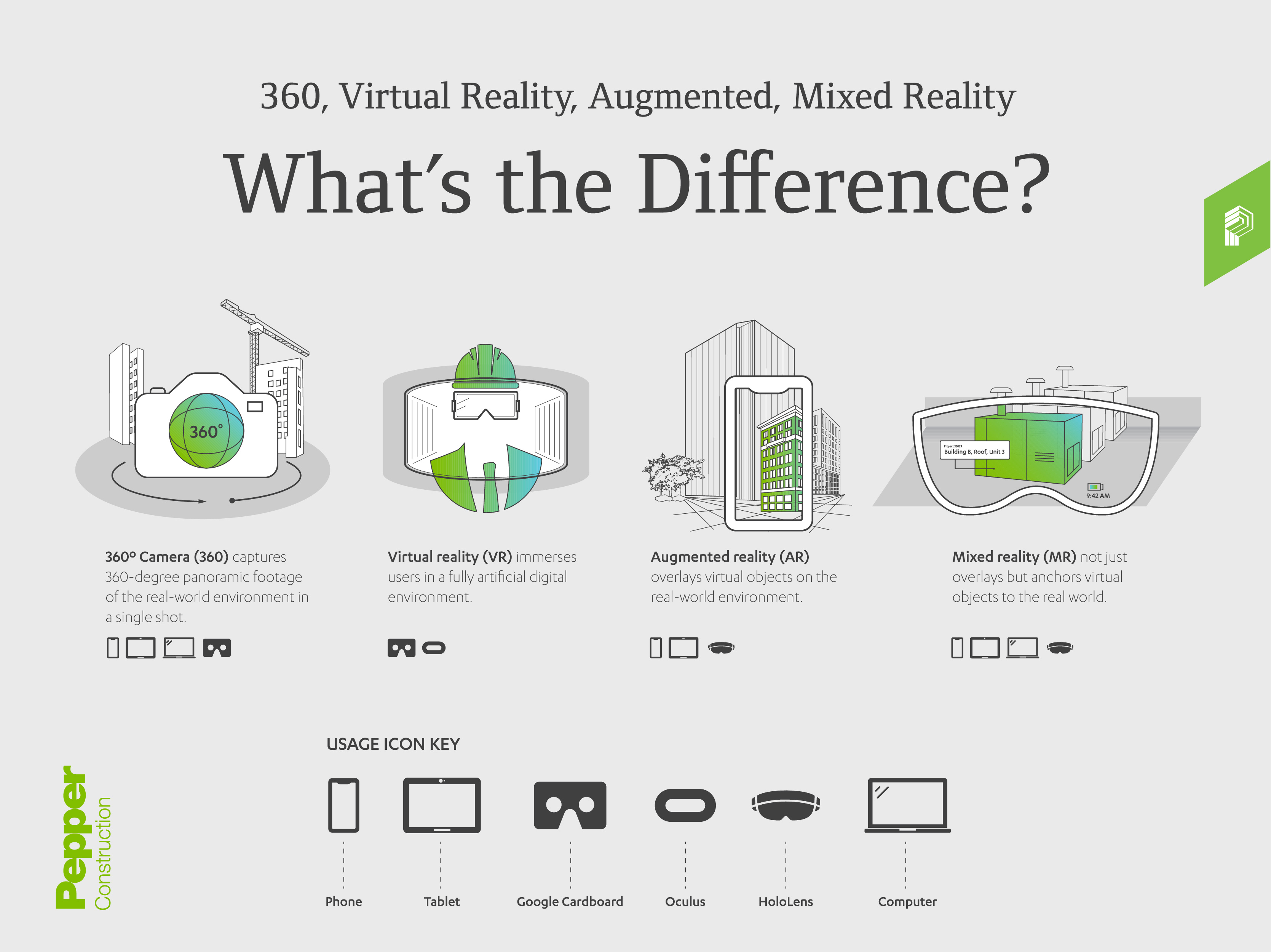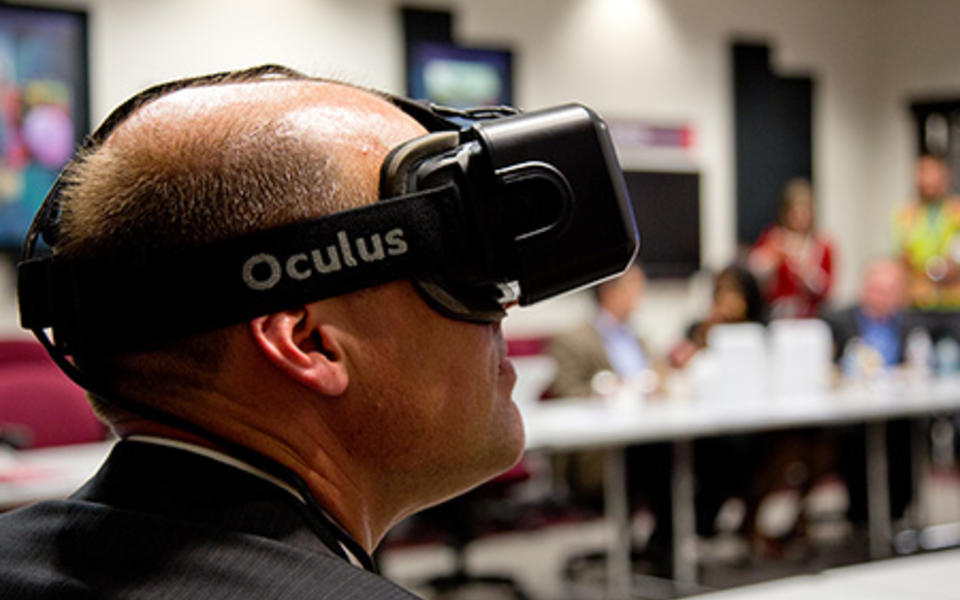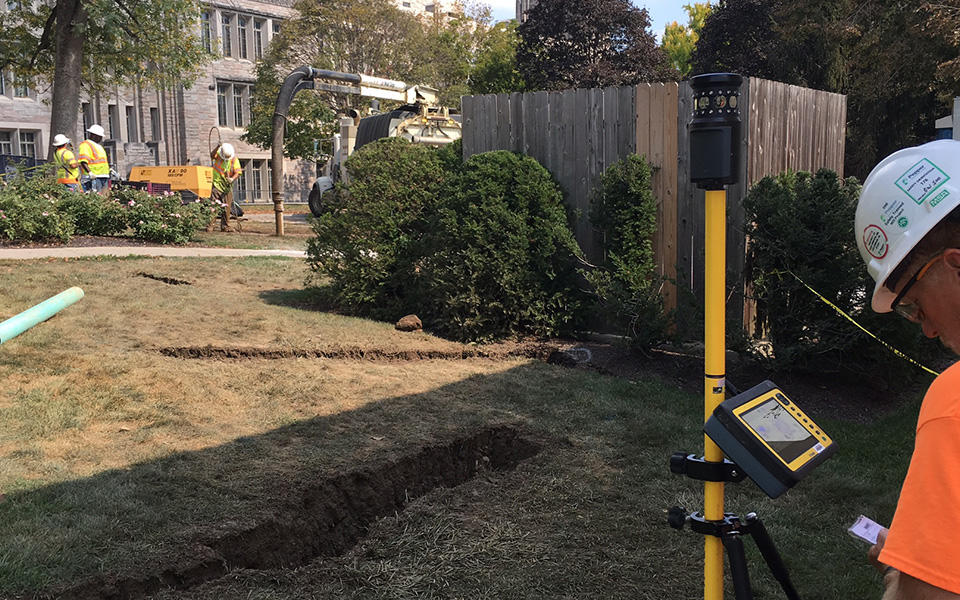Virtual construction & technology, Emerging technology
Project use cases for Augmented Reality
"I'm usually not this excited until after we've completed the project!"
What an awesome quote to hear from a client, and it came after his first experience with Augmented Reality.
At Pepper, we are 18 months into our utilization of this technology and over the course of the last year, we have learned a lot. While the first step was familiarizing ourselves with the hardware and software, we quickly realized that the bulk of learning would come through trial and error as we identified potential use cases on our projects.
At the beginning of testing each new use case, we were not sure what the outcome would be or if we would even succeed. In retrospect, this may have been our biggest reason for success over the past year. We haven't been afraid to push the technology to its limits, take some risks and try big things.
While our industry seems to have increased optimism about AR's potential to impact the future of construction, the most exciting thing we have discovered over the last year is the technology's ability to have an impact now. When you look at the construction industry, there's a great deal of potential for this technology to make a significant impact on the way we plan and execute work.
The purpose of this article is to share some of our experiences over the past year and look at what's ahead. But before we do that, let's lay the groundwork for some of the terminology.
What's the difference between virtual reality, augmented reality and mixed reality?
The graphic below provides a quick visual summary of the differences.
In short, virtual reality puts the user in a fully artificial (or digital) environment. With augmented reality, the user can see digital objects overlaid on top of the real world. Mixed reality allows you to interact with those digital objects in the context of the real world. With AR and MR, those digital environments can be scaled down in size and viewed on a table top or be complete one-to-one scale experiences.
To immerse our teams and our clients into augmented and mixed reality, we knew we wanted to use the Microsoft HoloLens.
What problems can be solved with augmented reality?
There was no handbook for how to use AR in construction (at least that we found). So we knew it was time to start listening and get creative, and we started with the question: "What problems can we help solve?"
After purchasing the HoloLens, we spent time "geeking out" and trying to educate ourselves on how the technology works. Once we wrapped our heads around the basics, we started listening to challenges our project teams and clients were facing and then asked ourselves if we could apply AR to help solve them. In some cases, we were even taking a problem that we would have solved with a different technology and exploring what would happen if we tried to solve it using AR instead.
Below are a few of the problems we came across and how we used AR to help solve them.
Schneck Medical Center Temporary Walkway
- Problem - We needed to clearly communicate our intent for building a temporary walkway adjacent to our jobsite for patient and employee entrance into an active hospital.
- Previous Technology - We would have modeled a temporary walkway in the 3D model for the project and sent the client a 2D image of the walkway.
- Why we Thought AR Could be Better - We thought viewing this proposed walkway in the context of the real-world jobsite would help improve the hospital's opportunity to consider the patient and employee experience, as well as provide feedback on the design and routing of the walkway.
Butler Chiller Plant Visualization
- Problem - The project team needed to understand the aesthetic impact of constructing a new chiller plant building in front of an existing, architecturally-significant building.
- Previous Technology - We would have generated renderings or videos using the digital 3D building models.
- Why we Thought AR Could be Better - Because the evaluation was being made on aesthetic, we thought the best way to accurately "feel" the existing environment was to be in it. We also felt that AR would provide us the chance to walk to different viewpoints on site and evaluate sight lines in real time.
- The Result - The owner and design team reviewed the model and felt comfortable with the sight lines. The team even opted to go for a different precast finish to help the new building blend in better with its existing surroundings.
Circle Centre Art Visualization
- Problem - The project team wanted to review the constructability of a new piece of artwork, and the client needed to visualize what the artwork was going to look like in their completed space.
- Previous Technology - We probably would have stopped after combining the 3D model with the point cloud of the space, but we may have also generated some still renderings or even a VR experience.
- Why we Thought AR Could be Better - By reviewing the artwork design in the context of the real-space, all parties would have a greater understanding of how the art moved throughout the space. It also gave us a chance to review the design from a constructability standpoint and identify attachment points back to the existing structure. Finally, it was just a great way of getting people excited about the piece!
Spoiler alert: The quote at the beginning of this article was from the artist on this project.
- The Result - At the end of the review, the artist felt confident his design was going to work from a constructability standpoint, and equally important to him, it was going to achieve the desired impact on those who experience the piece.
NDI MEP Framing Penetration Validation
- Problem - The project team wanted a proactive way to run a QA/QC audit to validate that framed openings for ductwork were located and sized correctly.
- Previous Technology - It's likely that we would have done a review in the field with the duct model on an iPad and walked each space comparing what was in the field to what was in the model and ensuring they matched.
- Why we Thought AR Could be Better - Because of the number of duct penetrations through walls on any given floor, the manual comparison of the built world to the model felt tedious. If we could put the digital representation of the ductwork that was yet to be installed in our superintendent's field of view, he could perform his QA/QC check as quickly as he could walk the space.
- The Result - The project team reviewed the conditions quickly, painting lines on the floor at the locations that appeared to be incorrect. This allowed the framing contractor to come back and correct those items before the HVAC contractor made it up to the floor to start installing ductwork.
Clif Bar Groundbreaking
- Problem - In this case, there wasn't a problem.
- Why we Thought AR Could be Applied - When you attend a groundbreaking ceremony, you're generally huddled around the footprint of the soon-to-be-constructed building. But nobody's excited about the ground – everybody's excited about the building! We thought it would be great to allow people to see a digital representation of the building on-site in full scale.
- The Result - On the day of the groundbreaking we faced two challenges – it was about 20 degrees outside and the ceremony was scheduled right before lunch. We thought those variables would be tough to compete with and wondered if anyone would give the technology a try. Once a couple people came over, we soon had a long line of end users waiting for their turn to see their new facility. We should have brought more headsets?
Columbia College - Concrete Pre-pour Inspection
- Problem - Items that are to be cast into the concrete (embeds, hangers, conduit and sleeves) may be installed up to the very last minute before the concrete is poured. Missing these items can result in costly rework. How can we minimize the chance for them to be left out or placed incorrectly?
- Previous Technology - On the day of the pour, the team would look at the plans either digitally (tablet) or physically (blueprint) to count, measure and verify that all the trades had installed their items.
- Why we Thought AR Could be Better - By loading the 2D plans onto the HoloLens, the team could visually verify that everything was installed correctly without having to look back and forth between plans. Overlaying the plan directly onto the plywood shoring floor would minimize the chance for missing items, which could save money.
- The Result - During inspection of the curtain wall embeds on the fourth floor, the Tech Engineer Foreman noticed that two were missing. They were documented and the curtain wall trade partner was notified in time to correct the issue before the concrete was poured. This would have been very costly to fix after the fact.
University of Illinois, Chicago - MEP/FP Install Verification
- Problem - Verifying that complicated mechanical systems have been installed in the correct locations can be very time consuming using traditional methods. How can we be more accurate and efficient?
- Previous Technology - MEP coordinators typically review 3D models on a tablet to ensure items were installed correctly.
- Why we Thought AR Could be Better - Allowing the MEP coordinator to overlay the coordination model with the actual vision would allow for instant verification that the trade had been properly installed.
- The Result - The coordination model lined up perfectly with the newly installed mechanical systems. By utilizing AR, we were able to visually inspect the systems as opposed to looking between a tablet and the real world. With proven accuracy and efficiency, we find this to be one of the most frequently utilized ways in which we are incorporating AR into our regular work routines.
What's next
As we move forward, we're challenging ourselves to find ways of sharing this new perspective. Since the technology is continuously evolving, here are our thoughts on what's coming up next with augmented reality and what it will take for its use to become more widespread in our industry:
- If one is great, more is better - You may have heard the news that the United States Army awarded Microsoft a $480 million contract to produce HoloLens prototypes, which could lead to over 100,000 HoloLens headsets being purchased. The mainstream application of this technology appears to be getting closer. In the same way, our industry won't truly realize the benefits of this technology until there are more headsets on our jobsites.
- Hardware Limitations - We recently tested using the HoloLens to construct aspects of our Net Zero trailer at GreenBuild. We found that the technology is not accurate enough to build from the digital information without making some manual adjustments. Additionally, wearables, such as the HoloLens, are not tethered to a separate computer as it is built into the headset. This inevitably means that it won't have the same processing power as other devices. We have been able to plan for these limitations but it does require that we manipulate the models to be smaller sizes. However, taking all of this into consideration, we believe that improvements are coming. And as technology continues to improve, the applications for construction will only increase.
- Mobile Devices - As our recent trade partner survey suggests, just about every tradesperson on our jobsites has a mobile device, such as a phone or tablet. As AR capabilities continue to increase on mobile devices, we believe that will help expedite the widespread use of AR.
Do you have a question about technology? Or are you interested in learning more about the application of augmented reality? Contact us. We would like to hear from you!
About the Authors
